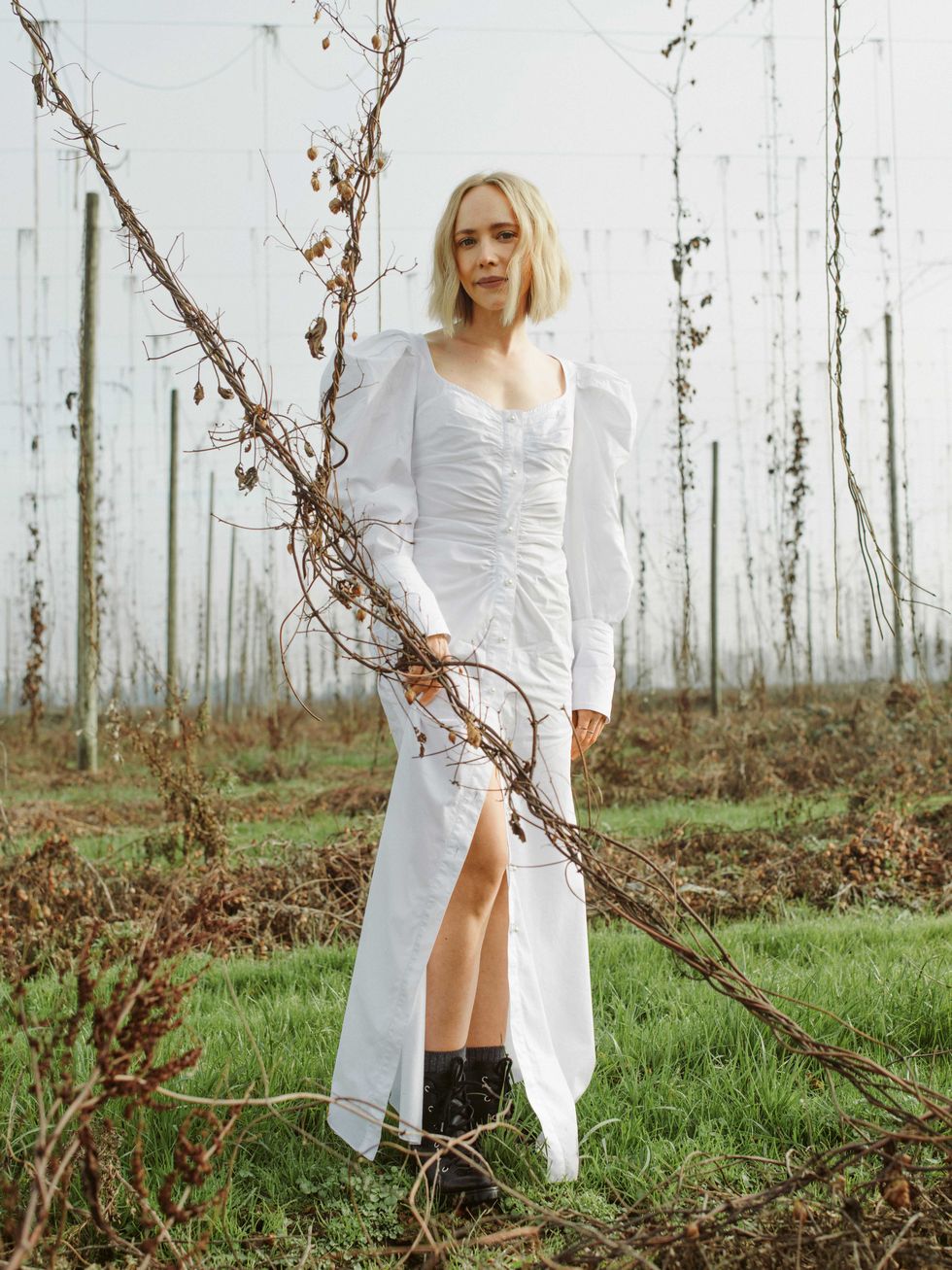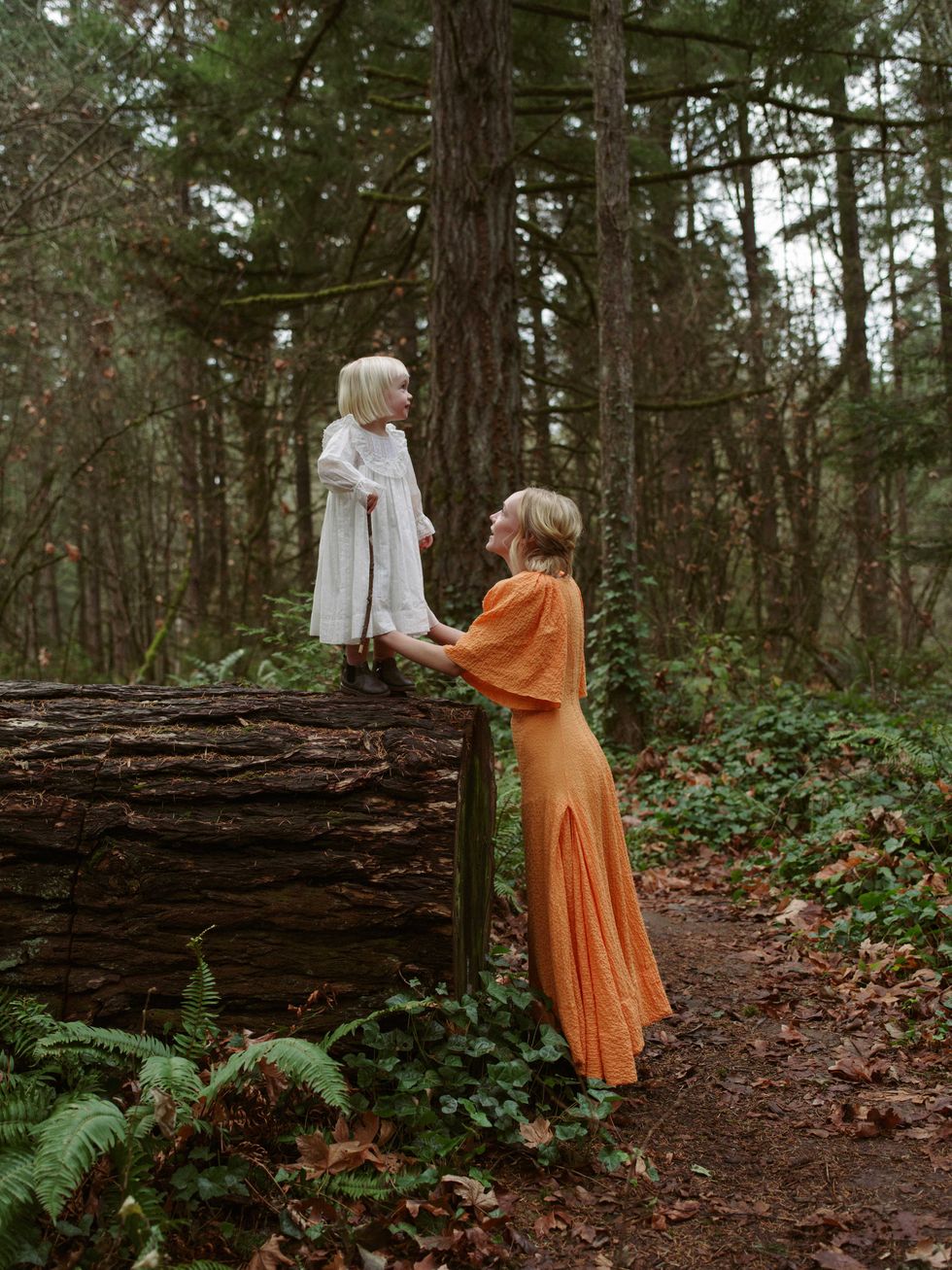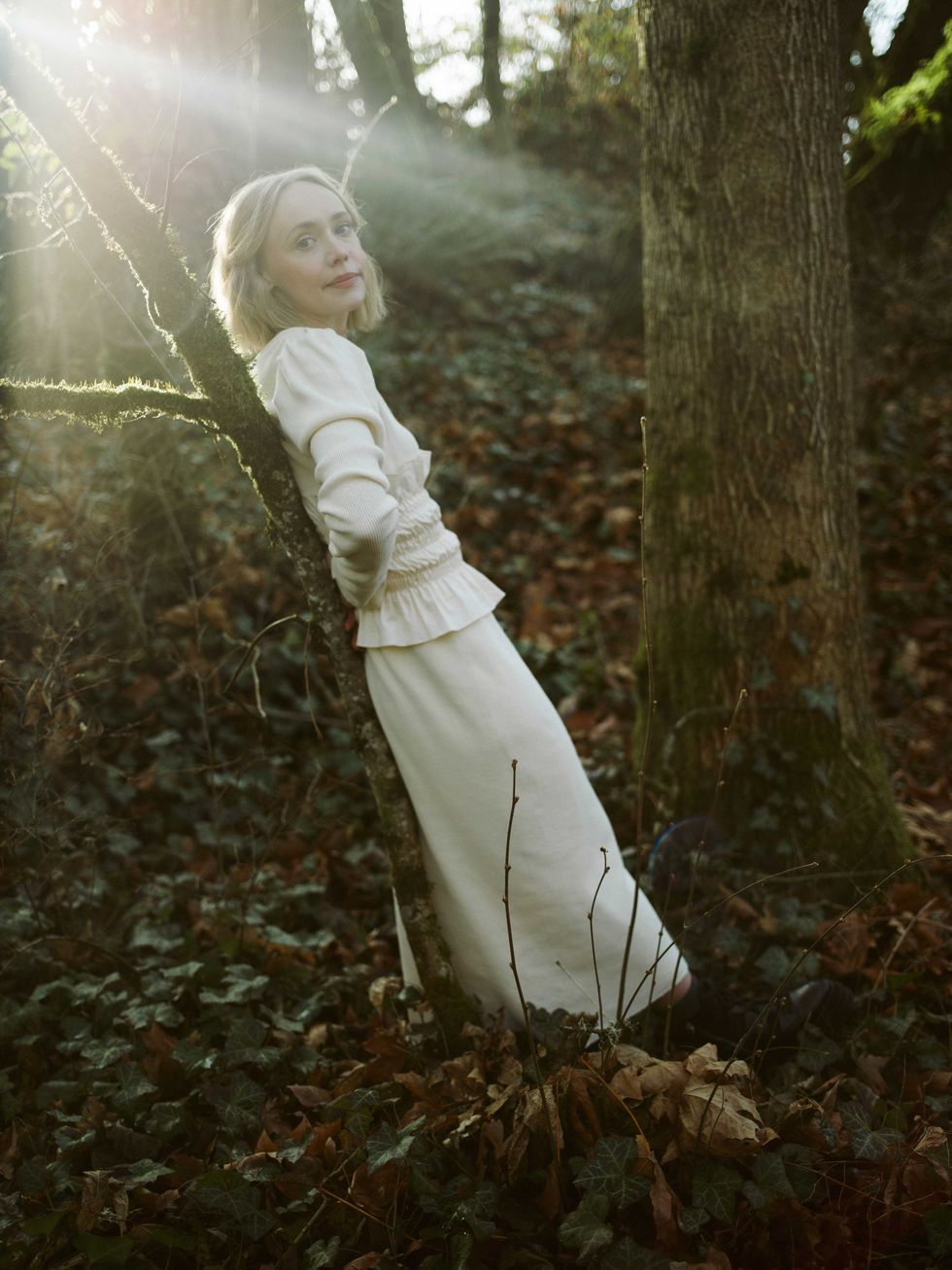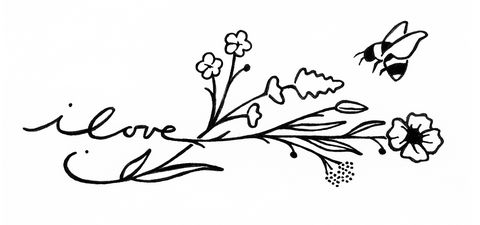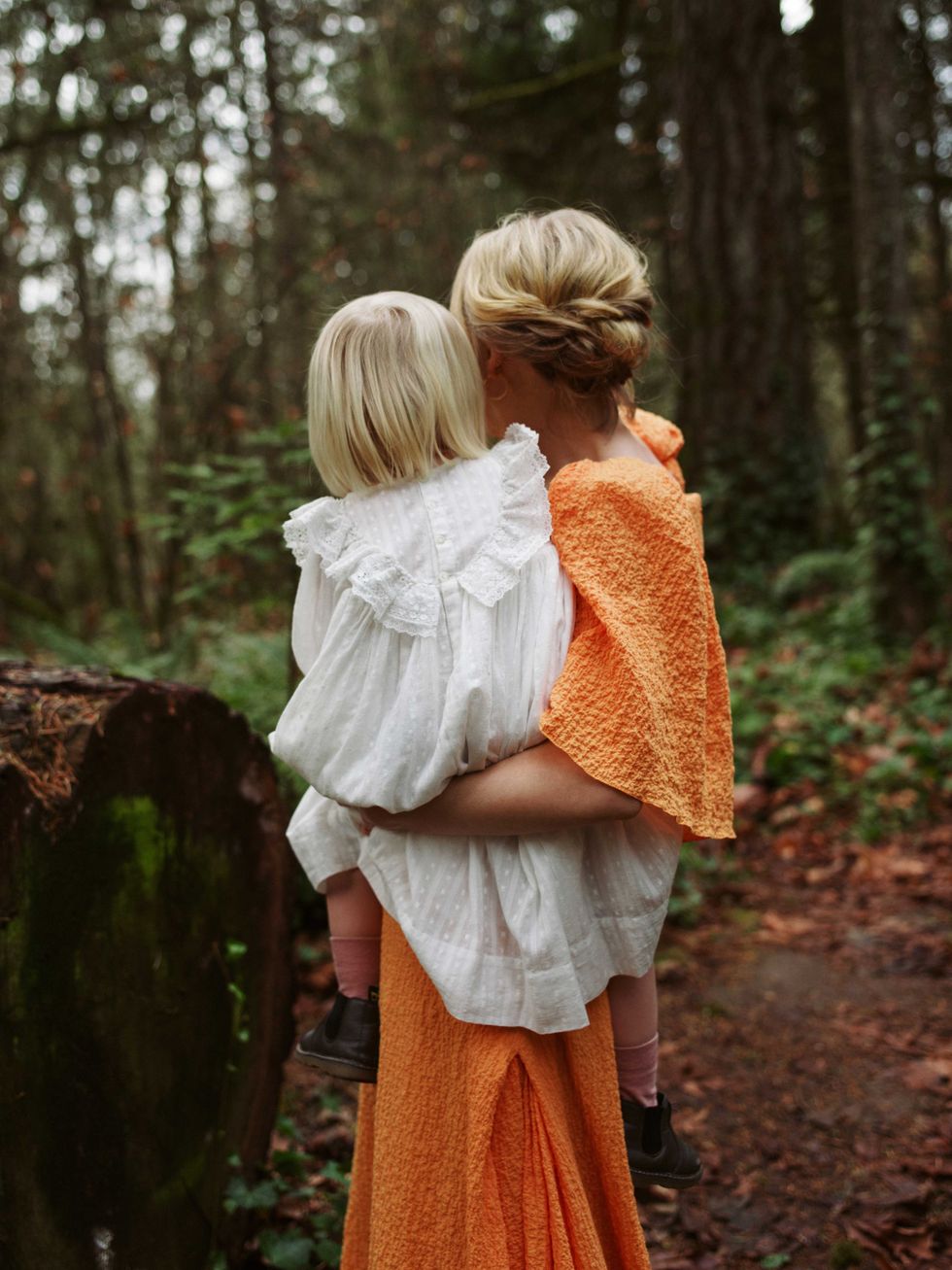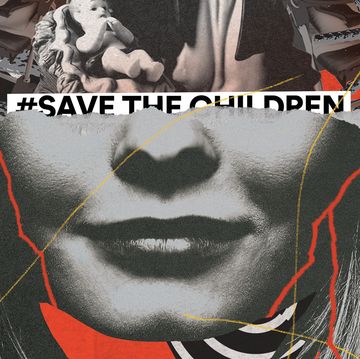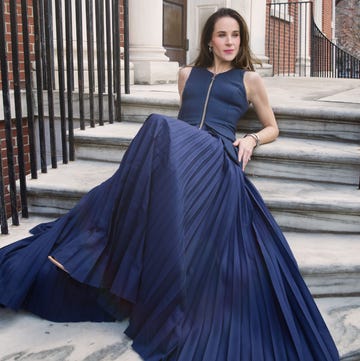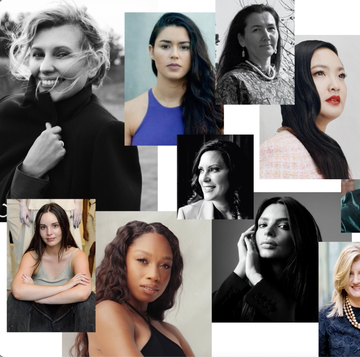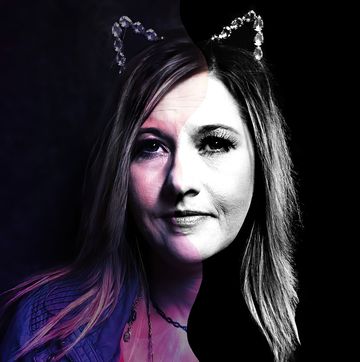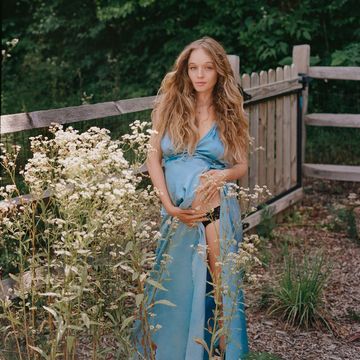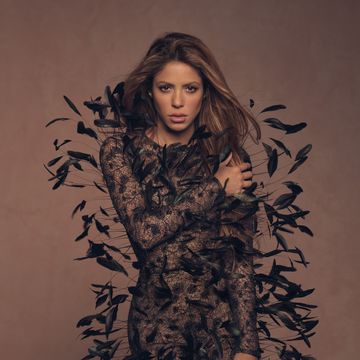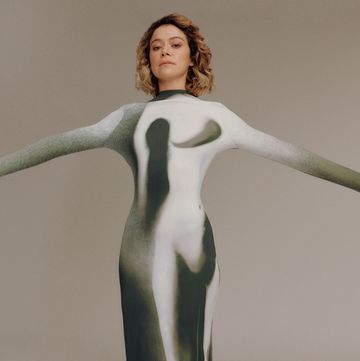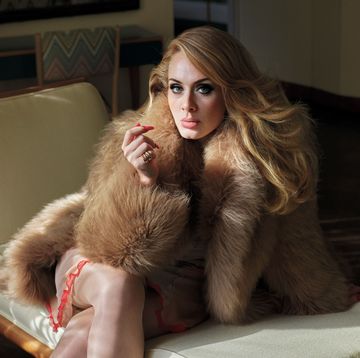When Kinfolk magazine emerged in 2011, it quickly became a cultural touchstone for a distinct millennial aesthetic that combined rustic twee and Scandinavian minimalism. Like a cross between Martha Stewart Living and your coolest cousin’s Instagram feed, its pages evoked a world of wind-swept daydreams: Maine lighthouses perched above cranberry bogs. Camping recipes for Dutch-oven cornbread and spicy dandelion greens. Long-haired dads in denim jackets cutting down Christmas trees in snowy forests. Photogenic friends gathered in fields of clover.
The magazine inspired legions of devoted fans—despite its modest circulation of 85,000, its best-selling companion books sold hundreds of thousands of copies, and in a certain milieu the name “Kinfolk” was ubiquitous, as if it had distilled an essential vapor of youthful identity. Its devotees fanned copies of the handsome paper magazine on their reclaimed-wood tables and made pilgrimages to its Portland, Oregon, offices. But the magazine also inspired a backlash that ranged from legitimate critique (it featured few people of color) to self-satisfied snark, construing the publication as peddling the absurd fantasy of an impossibly perfect and privileged lifestyle.
A photo spread at the beginning of The Kinfolk Home, a companion book, shows Nathan Williams and Katie Searle, the beautiful twentysomething couple who founded the magazine along with friends Doug and Paige Bischoff, sitting in their Portland loft, on an elegant tweed couch in front of walls striped with sunlight—both of them fair and beautiful and stylish, dressed in minimalist dark clothes. It looks like a life built from sophistication and composure, as if one could summon domestic harmony with style itself, almost like casting a spell.
But as with most glimpses of paradise, this one already held in its frame the seeds of its own unraveling. After Nathan and Katie relocated the magazine from Portland to Copenhagen in 2015, they lost a baby—Katie delivered their son, Leo, stillborn at six months. Just a few months later, when Katie was pregnant with their second child, Nathan came out to Katie as gay, and they decided to end their marriage. At three months pregnant, Katie moved back to Oregon to be closer to her family, preparing to raise their daughter as a single mother.
It might be easy to look at Kinfolk and simultaneously crave, distrust, and resent the perfect lives it seems to evoke. It’s the same envious resentment we bring to Facebook pages and Instagram feeds, the triple punch of projection, aspiration, and repulsion we often fling at lives that appear more ideal than our own. But in truth, its pages don’t testify to perfection so much as its impossibility: how every “ideal” life is actually a constructed fantasy cast across the troubled fissures of reality, in ways that are more vexed and contradictory than we imagined—and in this human trouble, also more full of grace.
On a crisp evening near the end of 2019, I meet Katie for dinner at Ned Ludd, a lamplit restaurant located just across the street from Kinfolk’s old offices, which are now occupied by “tech bros,” she tells me, who have let the wisteria grow wild along the exterior walls. Named for the original Luddite, Ned Ludd was where the magazine held one of its annual Christmas parties, and the interior feels reminiscent of Kinfolk’s early rustic aesthetic, full of raw wooden beams and brass chandeliers, with hip-hop on the stereo and pine boughs on the bar. It’s clear that for Katie, that Christmas party belongs to not just a different era but to another life.
It has been more than four years since Katie lost Leo, saw the end of her marriage, and moved back to Oregon to give birth to her daughter, Vi; and almost a year since her boyfriend, Joe Ensign-Lewis—the doctor with whom she fell in love just after Vi’s second birthday—died in a car crash when the van he’d rented was struck by a reckless driver. He was in the midst of moving into Katie's house, where they were going to build a home together.
At 31, Katie has survived the loss of a child, the end of a marriage, and the death of a great love, but her presence holds vitality rather than weariness: Her warmth feels grounded by a solid core of deliberate resolve, her compassionate attention is electrified by intelligence, and her luminous eyes flicker with the competing vectors of disclosure and restraint. Her friend Sarah Winward, an early Kinfolk collaborator in Salt Lake City, calls it a mixture of fire and poise. Petite and slender, almost elfin, Katie looks like a college student, but of course I don’t say this, because she also looks like a person who might get tired of being told, “You look like a college student!”
Over dishes that could have been lifted from the pages of one of Kinfolk’s autumn issues—river trout stuffed with lemons, foraged mushrooms on toast, and a maple shrub soda our waitress calls “agrarian Gatorade”—Katie tells me about her childhood growing up in McMinnville, in the middle of Oregon wine country, a town known mainly for a famous set of UFO photographs taken there in 1950.
Katie’s parents divorced when she was six, and she was raised in two homes: by two lesbian moms who are former members of the Church of Jesus Christ of Latter-day Saints, and by a still-active Latter-day Saint father and stepmother. Growing up, Katie experienced a deepening cognitive dissonance about the fact that the church taught her that her mothers’ lesbian relationship was wrong—“Their being lovers was as close to murder as sin could be”—but that they were also the most “Christlike” people she knew. She wondered how the Latter-day Saint notion of eternal families, the belief that the devout will dwell in heaven with their families forever, would apply to her own. Her mother, Jill, remembers how Katie tried to integrate the very different worlds of these two homes—one day she came into Katie’s bedroom and saw her sitting in a yoga pose with a crystal in one hand and the Book of Mormon in the other.
Katie met Nathan, also raised a Latter-day Saint, at Brigham Young University–Hawaii. In 2009, when Katie was 20, Nathan proposed in a Hawaiian forest under tree branches strung with hundreds of battery-powered tea lights. Though she had vowed not to marry young, she said yes, because she felt the presence of a divine design larger than her own intentions. When Nathan called Katie’s mother, Jill Searle, and asked for her permission to propose, he told her that he was planning to be a doctor, and that he would always provide for Katie. So a few years later, when he quit his job at Goldman Sachs to put out a lifestyle magazine full of photo-essays on juicing, Jill remembers wondering, “What happened to that doctor thing?” But Nathan was successful at everything he did. “We used to joke that he had the Midas touch,” Jill says, though he never took any of his mother-in-law’s ideas. (She once suggested a large-print issue of Kinfolk called “Old Folk.”)
In the early days of the magazine, it was a “complete labor of love,” Katie says, with all their friends doing the photography and design. She and Nathan packed and shipped the first issue from a friend’s living room. Katie smiles when she remembers the time they photographed hydrangeas spilling out of ice cream cones: how cold it was that day—even though you can’t tell in the shots—and how that chill was part of the grit and the magic; how wonderful it was to muddle through together.
Katie embraced that sense of community, but things shifted over time. As the staff got larger, Katie moved from an editorial role to a managerial one, and Nathan’s commitment to the magazine grew more consuming. Right before they relocated Kinfolk to Copenhagen, they ran it out of the loft where they lived. Katie was pregnant and struggling with morning sickness, but she would still wake up early to get everything looking orderly before the rest of the staff arrived. “It was a nightmare,” she says. The business had invaded their home, a concrete manifestation of how much of Nathan’s life it had already absorbed—an irony, of course, for a magazine committed to the idea of slow living and work-life balance. “We were so busy with Kinfolk, it was just like a hamster-wheel situation most of the time we had together,” she says. “I didn’t really stop for one moment to pause and focus on myself.”
When I ask Katie how much she felt the magazine was her dream as well as Nathan’s, she tells me that she has spent much of her life struggling to identify her own tastes and preferences. For many years, she didn’t realize how malleable she was—how much of the patriarchy of her church she had internalized. “I one hundred percent have codependency,” she says. “And I think a lot of that stuff is from the church.” It taught that her role was to be a caregiver, so it made a kind of psychological sense to spend much of her marriage supporting her husband’s vision: “All the moves we made, all the things we did for the business, were more or less Nathan’s dreams.”
As we drive on darkened highways back to McMinnville, Katie tells me about how different it felt when she fell in love with Joe in 2018. Joe was completing his psychiatry residency at Oregon Health and Science University and lived with a big-hearted ferocity that thrilled her: He enjoyed simple pleasures like fast food and video games, and got teased for saying, “Guess what? I love you” to his friends and family all the time. Her friend Sarah remembers how Katie talked about Joe in the beginning: He’s just such a dude. He’s such a bro. He’s rowdy. He wears sweatpants. “She loved the way he lived unapologetically,” Sarah says.“It lit Katie up.” Candid and unrestrained, Joe was the opposite of Nathan, who had always been quiet and private. While Nathan brought out the serious side of Katie, Joe summoned her goofy side. “When Joe came into her life,” Jill says, “it was like we got our Katie back.” He’d never heard of Kinfolk when they met, and Katie liked that. Joe didn’t want her silhouette from a Kinfolk photo shoot. He wanted her.
Joe was devoted to Katie’s daughter from the start. Their first Halloween together, he and Vi dressed as bumblebees, and Katie was a beekeeper with a long white veil. Vi called him Joe Joe. “Joe had a lot of firsts with us,” Katie says—visiting his first pumpkin patch, cutting down his first Christmas tree—and she is glad he got to have them before he died.
The couple didn’t end up getting much time: They met in October 2018, and Joe died the following March. Katie’s grief for Joe isn’t just grieving for the loss of what they had, but for what they never got—the children they might have had, the additional father figure he could have been for Vi. “I don’t regret at all how deeply we fell for each other and how hard we loved each other,” she says. “I’m so grateful for it. We’d never felt that kind of love, and we were able to experience it together.”
Halfway to McMinnville, Katie grows distracted and starts fiddling with her GPS. She has realized the route is taking us past the site of Joe’s accident, where she has not yet returned—it took her months to even get in a car. (Her mom would drive Vi to preschool.) In the early days of her grief, Katie felt pressure to perform hope at the end of every articulation of pain, to reassure people that she would be okay. But she learned to push back against her impulse to offer silver linings—to convey hope only if it was what she felt in that moment, and to accept that in other moments, she might feel like doing something else: yelling at the sky with Vi, or driving to a place called the Rage Room with her mothers, where she got hammers and mallets and all kinds of things to break (“The wine bottles were the best”).
When I ask Katie if she has ever just wanted to wail at the universe,“Enough!,” she shares that when she found out Joe was dead, she kept repeating, “ ‘I can’t do this. I don’t want this....’ ” she says. “What kept blurting out of my mouth was like, ‘I remember this. I don’t want this again.’ ” Her body remembered the brutality of grief. She wanted to push it away like a toxin, or an intruder. But driving along the dark Oregon highway, Katie clearly holds her pain close; it textures her sense of self with ragged edges and long furrows of loss. She tells me grief isn’t a tunnel, and the point isn’t to emerge on the other side. You don’t move through it. You learn to carry it with you.
Under gray skies the next morning, the air smelling like pine and smoke, Katie shows me around downtown McMinnville. The streets are striated with layers of her history: the boarded-up coffee shop where she used to get steamers in high school, and the sidewalks where she’d run into childhood acquaintances when she returned from Copenhagen, three months pregnant and single. Back then, she often had the impulse to share too much in response to questions about her life: Yes, I’m pregnant, but my husband is gay and we’re getting a divorce and I’m going to raise the baby on my own.
Katie points out the entrance to the hidden speakeasy where she took Joe on their first date, and then the movie theater they went to with Vi one night a week before he died. Vi couldn’t make it through the whole movie, so they left early to get ice cream. These are the ordinary nights that become electric with significance when you realize you will never have more of them.
We eat breakfast at a farm-to-table café that Katie identifies as McMinnville’s first hipster establishment, though back when she was growing up it was a paint-your-own-pottery shop called All Fired Up. At the end of their senior year of high school, she and her girlfriends had a fancy dinner in a little loft overlooking all the pottery, and after they ate, they climbed out a slanted window onto the roof. “Just to give you an idea of how unrebellious we were,” she told me, “this was our idea of breaking the rules.”
But after a few minutes, they thought they heard the cops on the street below and climbed back inside so quickly they scraped their backs on the window frame. “We didn’t last more than two minutes out there,” she tells me. “I was very much a goody-two-shoes kid, and I’m still very afraid of authority.” This is a woman who has trouble jaywalking, and who didn’t start drinking until her mid-twenties. She didn’t cuss at all until her marriage ended; now, she cusses all the time. “I feel like I could say the f-word every few hours when I remember what happened in my life,” she says. Joe cussed constantly. She sometimes pictures him as a young child, teaching himself how: “I have this vision of little Joe standing in front of a mirror and being like, bitch, fuck, damn. Just practicing in the mirror. Seeing what it felt like.”
After Joe died, Katie wanted to break a few rules in honor of him. She told his brother she’d call him from jail, to bail her out, but her version of breaking the rules has been both less dramatic and more meaningful than breaking the law. She has stopped telling people what she thinks they want to hear, and started being honest about her own needs and desires instead. It’s part of a larger process of self-assertion that’s been happening since the end of her marriage—a process that includes the tattoo across her forearm. She got the first installment—the simple phrase “ilove,” an anagram of Leo’s and Vi’s names—when Vi was a baby. After Joe’s death, she took a group of his loved ones to get tattoos with her. (“You have to remember that a lot of these people are Mormon; it was a big deal for them.”) Hers included a J for his name, and a tiny bumblebee. Katie told me the pain felt right. She even wished it had hurt a little more.
Chad Ford, Katie’s college professor and mentor, points out that Katie getting tattoos with Joe’s family and friends is one of many ways she makes her pain communal. “She’s not just lost in her own grief,” he says. “She also has this ability to share it.” Ford flew out to Oregon a few weeks after Joe died, and though he’d seen her go through other life-altering losses, something about this grief felt more shattering: “She was really at the pinnacle of happiness, as happy as I’ve ever seen her in her life. I think she finally saw a life that she wanted, and then to watch it crumble.... It’s the only time I’ve ever heard her wonder, ‘Am I cursed?’ ”
Katie lives in a quaint farmhouse-style home on the same street where her mothers have lived for decades. She bought it two years after moving back to McMinnville, and says setting it up felt like discovering her own aesthetic after years of keeping her preferences submerged. It’s here where she works as an independent consultant. This was also the home that Joe was moving into when he died, and their last argument before his death was about what couch to buy. “Nathan was all about form over function,” she says. “But Joe was the opposite.” He wanted a comfortable couch and didn’t care what it looked like.
We sit on the one Katie bought soon after his death—comfortable in honor of Joe, but also stylish, a way of staking her own spot on the form/function continuum marked by these two men—facing a fireplace full of candles, and the massive plastic trampoline that dominates Katie’s small backyard. She tells me she assembled it herself. “The moral of that story was, Read the instructions,” she says. But perhaps the moral is also that a woman who’s been called “graceful” her entire life—“It’s an adjective people are always using about me,” she says—might be other things as well: determined, competent, resourceful, capable of building a trampoline twice her size so she could jump on it with her toddler daughter. “There are two things I’ve done in my life that were physically impossible,” she says. “One was birthing Leo. Second was building this trampoline.”
Both Jill and Sarah describe Katie as a “memorializer,” and upstairs, in her bedroom, she shows me a shrine dedicated to Leo: ink prints of his tiny hands and feet; the tiny blue knit hat they put on him at the hospital in Copenhagen; his ashes in an urn; a stuffed lion that Vi sometimes takes down from the shelf to play with (though all it takes is one look from her mom, and she immediately puts it back). Katie tells me that bringing the urn through airport security when she was coming home from Copenhagen was “the most public display of disarray and just pure grief that I have ever manifested. I just didn’t want to let it go.”
Katie wonders if it sometimes makes people uncomfortable to see these shelves dedicated to Leo, and I say that maybe it does—but maybe there’s something useful for them in facing that discomfort. There is one kind of beauty that tries to survive pain by covering it, and another kind of beauty that tries to survive pain by expressing it—by integrating that pain into daily life in a way that might allow a person to be fully present. There is a Chinese saying that before you can conquer a beast, you first must make it beautiful; and this is the kind of beauty I sense in Katie’s home—the transfigured beast, the beauty of carrying grief rather than shunning it. It’s not an easy beauty. It’s hard to look at that tiny blue hat. It’s like staring straight at the sun. We will always lose what we love. There is no deeper truth than that, no other way.
When she was pregnant with Leo, Katie tells me, she pictured him as fragile, a lion cub—someone she had to protect. During the period of time between learning about the fatal defects in his heart and terminating the pregnancy, she could still feel him kicking inside of her. “That was a painful time,” she tells me, and these five simple words summon an emotional crevasse that’s hard to fathom.
Before Leo’s delivery, Katie and Nathan had imagined they wouldn’t want to hold him, but of course they did. The first thing Nathan said after he was born was, “He’s perfect.” He was stillborn, but he still looked like an absolutely ordinary baby—just tiny and quiet and still. “Some people don’t understand that I have two children,” Katie says. “I have a daughter and a son.” Katie says that when you lose an infant, you are also mourning “the imaginings of that child...envisioning what they were going to be like, and experiences you’d have with them.” With Leo as with Joe, she is partially grieving what never was.
The mussels that Katie cooks for our lunch—simmering in coconut curry, flecked with shallots and bell peppers—could have come from a Kinfolk spread on winter hospitality, but they hold the ghost of an era—its distance as much as its residue. Nathan used to make these mussels for Katie on special occasions, especially when they lived in Copenhagen, where seafood was cheap and plentiful, but she never tried to make them herself. She always felt like an inferior cook in their marriage, so it’s a milestone that she’s pulled them off today. She’s far away from the wife she was then, dressed in the elegant black clothes Nathan always felt looked best on her, and as we eat this beautiful food—tearing hunks from a crusty baguette, breathing in the humidity of the spicy broth—Katie points out the un-Kinfolk-like aspects of her life: her messy counters, the pre-minced garlic she has scooped from an economy-size plastic tub. It strikes me that she’s taken what she loved best about that world—food as a catalyst for gathering and intimacy and care, beauty as a form of holding memory—and left its more constricting elements behind.
After lunch, Katie brings me to Vi’s preschool to watch her holiday recital. Vi sings “Jingle Bells” in her candy-cane-striped dress, carefully concealing a little green bell behind her back until the time comes to raise it high and shake it. When she waves at her mom and grandmothers in the audience, the sense of joy and closeness among all three generations is palpable. But it’s not a joy that has forgotten anything. It holds everything that has come before: Jill holding the body of her stillborn grandson, and then bringing her pregnant daughter back home after the end of her marriage, or standing in the hospital room when Vi was born, punching out of Katie with one tiny fist under a stormy sky full of thunder and lightning.
As we watch Vi in her special reindeer glasses, it feels like the moral of Katie’s story is that no life has a moral. Or, at least, no life has just one. Old morals are joined by new ones. Katie’s story is a story about loss, but it’s also a story about care—a mother’s care for her daughter, that daughter’s care for her own daughter; the kinds of care made necessary and possible by the strange, unforgiving territory of grief. It’s a story about losing the Latter-day Saint idea of eternal family and gaining another sense of family, just as durable, in its place. It’s a story about leaving the beauty of Kinfolk and forging a new sense of beauty in its wake; a story about losing one partnership and forming another one, and losing that one and saying “Enough!” and waking up to live another day, even when it feels unbearable. “We’re all just figuring out how to take each step within that pain,” she says.
Katie’s life is now about beauty as sustenance rather than performance. It’s about letting herself be many things at once: “I feel really broken, but really whole,” she says. “A huge part of me is missing, but I found part of me.... I’m so grateful yet feel so robbed.” Katie no longer thinks of life as a search for happiness as if it were a destination, a place where you could remain in perpetuity. Pain isn’t what you’re trying to transcend; it’s part of where life happens. So she allows the present moment to hold the residue of all the wreckage. She makes the beast beautiful, and lets the contradictions stand—broken and whole, grateful and robbed, missing and found.
Hair by Paige Ashcroft; makeup by Kylie Sallee; produced by Lauren Martin.
A version of this article appeared in the June 2020 issue of ELLE.
Subscribe to ELLE for Just $10
Leslie Jamison is the New York Times bestselling author of The Recovering, a critical memoir; two essay collections—The Empathy Exams and Make it Scream, Make it Burn; and a novel, The Gin Closet. She is a contributing writer for the New York Times Magazine and directs the graduate nonfiction program at Columbia University.
